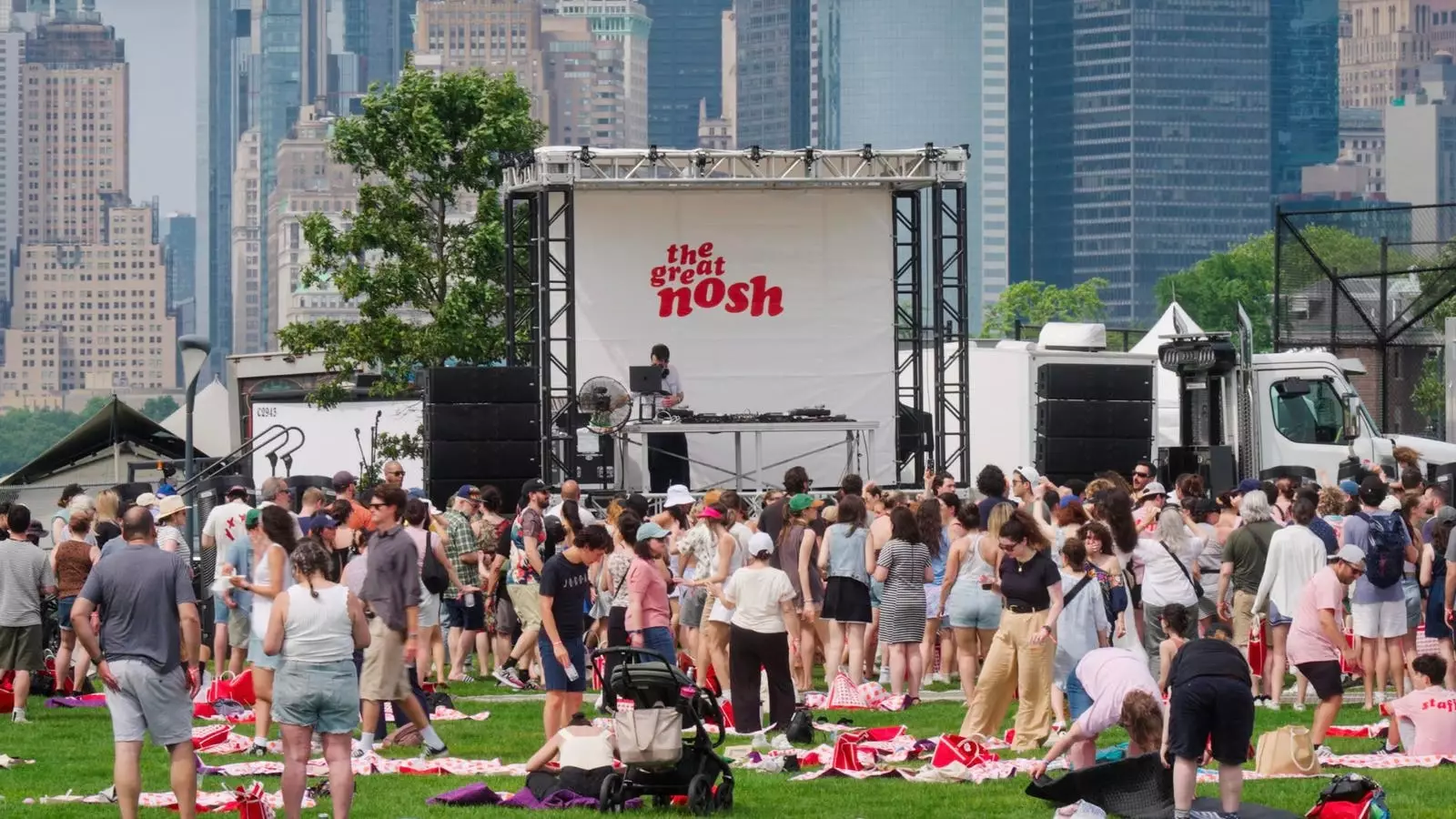In today’s fast-paced, multicultural cities like New York, community gatherings that celebrate cultural identity through food are more significant than ever. The inaugural GreatNosh festival exemplified this by transforming Governors Island into a vibrant tapestry of Jewish culinary tradition and innovation. With over 2,000 attendees, the event showcased not just food, but a collective reaffirmation of cultural resilience, creativity, and community bonds. It reminded us that food is much more than sustenance; it is a living testament to history, migration, and evolving identities.
The island setting provided a literal and symbolic refuge from urban chaos, offering attendees a rare moment of pause amidst breathtaking views of the Statue of Liberty and Manhattan’s skyline. This deliberate separation from the city’s relentless rhythm created an atmosphere conducive to reflection, discovery, and connection. The festival’s success demonstrates that when we step into spaces intentionally designed for shared cultural expression, we forge pathways to empathy and understanding. This is particularly vital in a diverse metropolis where heritage lines often intertwine, and the act of celebrating food becomes a unifying gesture.
Redefining Jewish Cuisine Through Innovation and Inclusion
Contrary to stereotypes that cast Jewish food as monotonous or unchanging, GreatNosh highlighted its rich diversity and vibrant adaptability. From traditional staples like challah and rugelach to innovative collaborations such as roti reubens—a fusion of Thai and Jewish flavors— the event emphasized the dynamic nature of culinary traditions. Chefs and food creators used their platforms to challenge perceptions, shedding light on lesser-known dishes like Iraqi Sabich or Middle Eastern staples such as sabich sandwiches, sparking conversations about immigration, displacement, and cultural exchange.
What stood out was the event’s emphasis on seasonality and global influences. The diverse pop-ups demonstrated how Jewish food is not static; it morphs and adapts as communities migrate and interact. This culinary elasticity echoes the broader narrative of Jewish history itself—a mosaic of stories from different corners of the world, each contributing its own spice to the collective flavor. The festival’s playful approach to culinary experimentation told a larger story: that cultural heritage is resilient but also open to reinvention, ensuring its relevance and vitality for future generations.
The Power of Food as a Medium for Connection and Storytelling
Naama Shefi, founder of the Jewish Food Society, articulated her belief that food functions as a medium for storytelling—carrying histories, emotions, and identities across borders and generations. During GreatNosh, cooking demos from renowned personalities like Gail Simmons and Pati Jinich provided attendees with hands-on opportunities to learn traditional techniques such as challah braiding and European preservation methods. These experiences fostered a sense of participation, transforming passive observers into active storytellers of their own cultural narratives.
The event showcased how shared culinary experiences can spark curiosity and dialogue. For instance, a first-timer tasting Sabich may uncover a story of Iraqi-Jewish migration, sparking questions about history, displacement, and adaptation. Such moments of discovery foster personal connections and deepen collective understanding. Food becomes a bridge—across language, geography, and identity—empowering individuals to embrace their roots and appreciate others’ traditions.
Community, Celebration, and the Future of Cultural Festivals
GreatNosh’s success underscores a broader cultural truth: that gatherings centered around food serve as catalysts for communal resilience and pride. In times marked by political division and social fragmentation, such events act as antidotes—reminding us that shared experiences, hospitality, and celebration are potent tools for fostering unity.
Naama Shefi’s vision for an annual festival is both aspirational and pragmatic. It highlights a broader trend—urban cultural festivals are not transient moments but potential catalysts for ongoing dialogue and community building. Her wish to expand this model to other cities hints at the universal value of food as a cultural language, capable of transcending boundaries and fostering inclusivity. The festival’s design, emphasizing participation and interaction, signals a future where cultural celebrations are not just passive displays but active spaces of exchange and growth.
The playful yet profound selection of dishes, like the marbled rye roti Reuben with pickled mango slaw, exemplifies how innovation can honor tradition while exciting modern palates. It also demonstrates that culinary fusion is more than just trend—it’s a form of cultural conversation, reflective of our interconnected world. As new generations embrace these hybrid flavors, they forge their own stories, ensuring that tradition remains alive but not static.
In sum, the GreatNosh festival proved that food is more than nourishment—it is a celebration of identity, resilience, and community. When curated with intention and creativity, culinary traditions can serve as vessels for understanding, pride, and joy. As cities continue to grow more diverse, the role of food festivals will likely expand, becoming vital platforms for storytelling and collective healing. This is the true power of communal dining: it transforms individual histories into a collective narrative that sustains and celebrates our shared humanity.


Leave a Reply